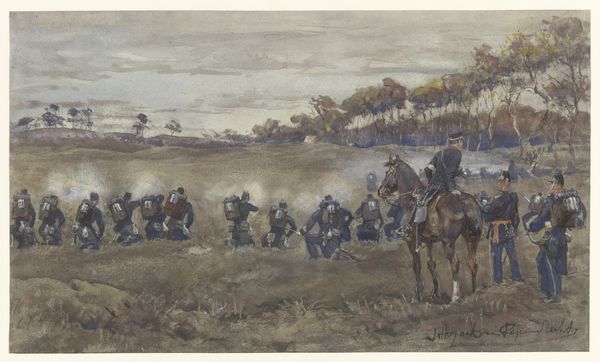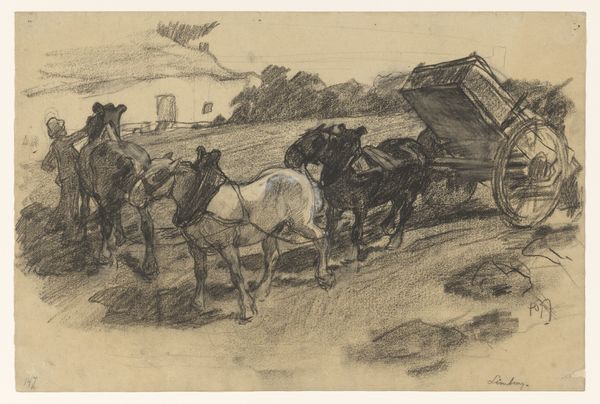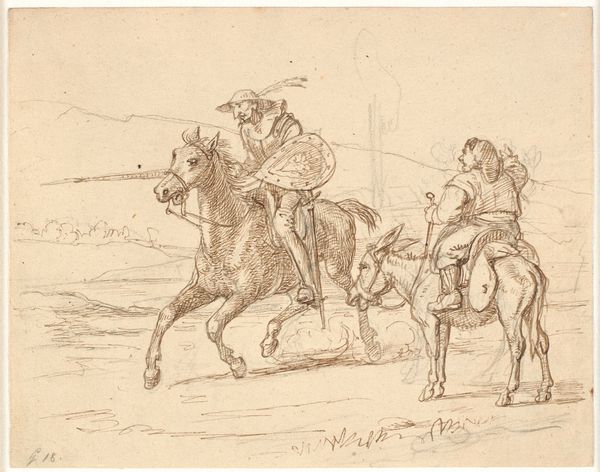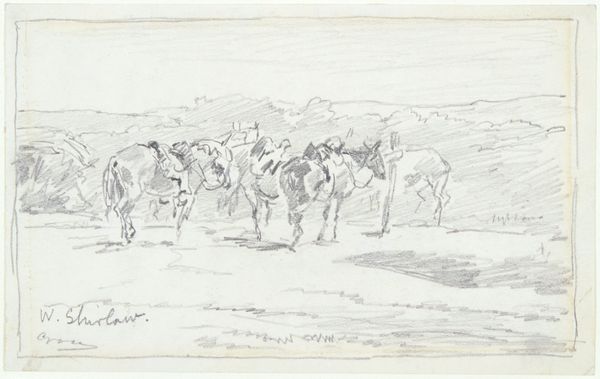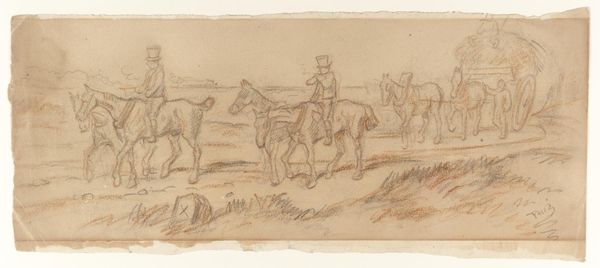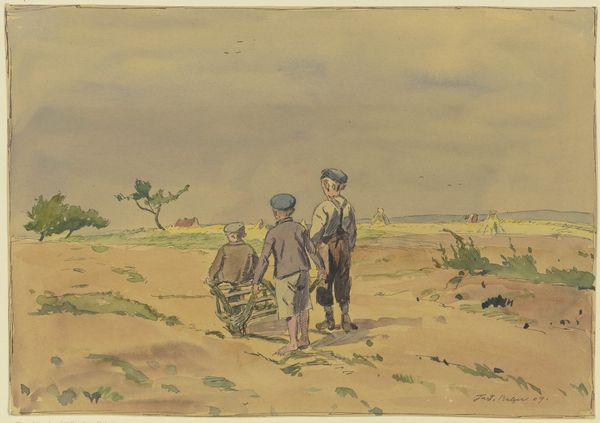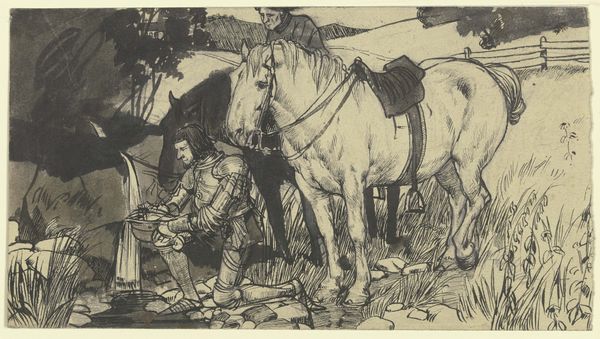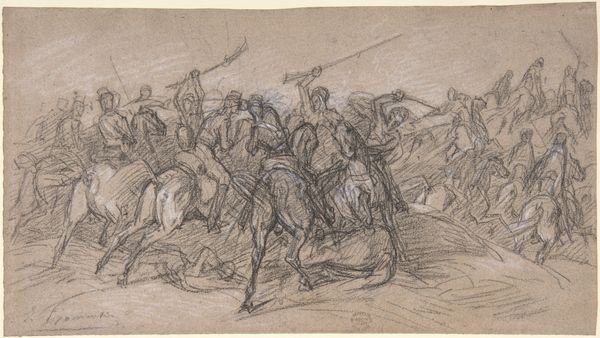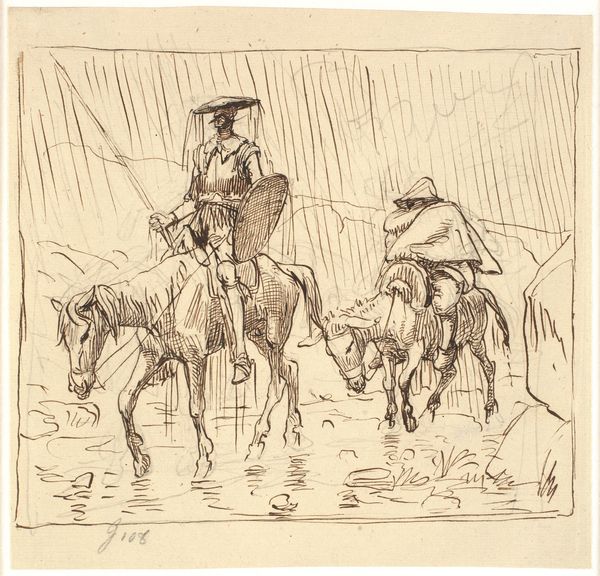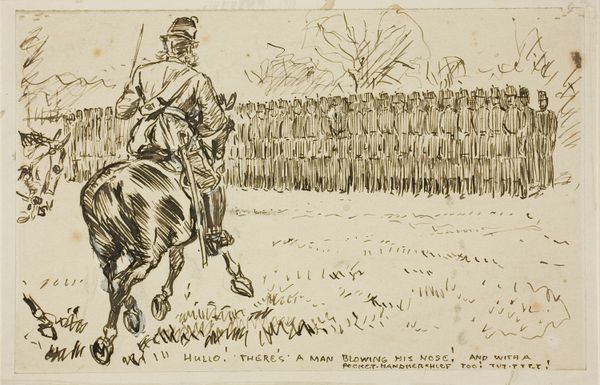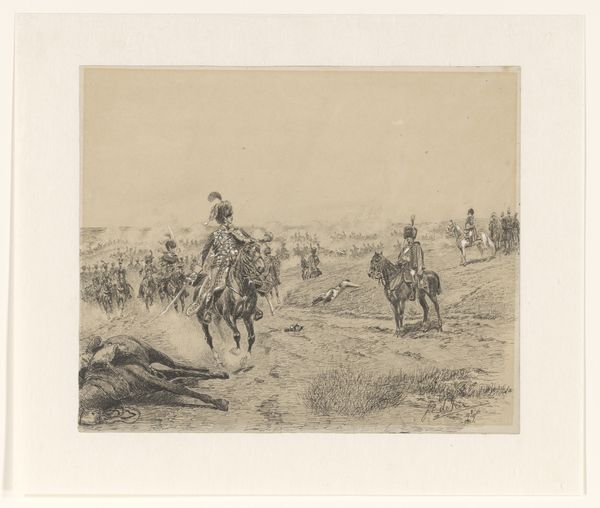
Artillerie in Russisch-Polen fährt in Gefechtsstellung 1915
0:00
0:00
Copyright: Public Domain
Curator: This is "Artillery in Russian Poland Moving into Firing Position" by Reinhard Pfaehler von Othegraven, created in 1915 using coloured pencil, gouache, and chalk. Editor: The rapid strokes, the muted palette... it gives off a hurried, almost feverish impression. Like a snapshot of impending action. Curator: Precisely. This piece offers a glimpse into the First World War through the lens of the Eastern Front. Consider the significance of depicting artillery—a crucial element, fundamentally transforming warfare and its brutal impact on the landscape and psyche. Editor: And yet, there’s a curious absence of overt violence. The focus is on movement, a group of riders blurring into the landscape, a rhythmic sequence created by the angle of their bodies. Curator: The fact that these are not individualized portraits is key. They become figures representative of a mechanized war machine. It suggests a stripping of identity within this landscape of conflict, which speaks to the experiences of many on the front line during this period. Editor: The way Othegraven employs those subtle shifts in tone creates the illusion of depth and speed. It makes you feel as though the entire scene is caught mid-gallop. Curator: These visual cues, the artistic shorthand as it were, evoke the sense of urgency and precariousness characteristic of wartime experiences. The artwork becomes more than just a record of military action; it conveys the psychological state of those involved. Think about what this artwork would say to German audiences in 1915? Editor: Perhaps that landscape mirrors the uncertainty, too, lacking crisp details, almost faded. The work becomes more than reportage—the composition itself comments on the turmoil. Curator: The image reveals the entanglement of man and machine. How technology fundamentally changes the way human conflict is waged and experienced. Othegraven offers us an intimate study of war, not of battles won or lost, but of lives changed in the landscape of modern conflict. Editor: Looking closely has revealed so much about how these formal choices affect the work’s ability to resonate emotionally. It highlights the importance of a slower look to unravel some of the complexities embedded in the artist’s construction.
Comments
No comments
Be the first to comment and join the conversation on the ultimate creative platform.
